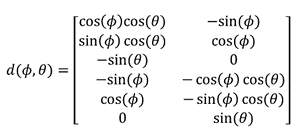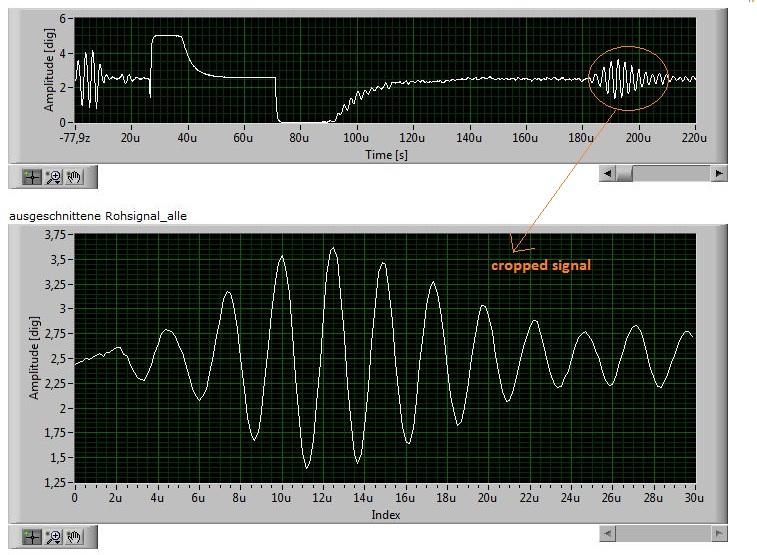Search the Community
Showing results for tags 'signal analysis'.
-
I am using the MUSIC algorithm and the Vector Antenna to determine the AoA of the incoming signals in LabView. My question is how can I implement the Steering Vector for the Vector Antenna in LabView? The mathematical equation of the Vector antenna is in the attachd, where 𝜙 is the azimuth angle and 𝜃 is the elevation angle.
-
Hello, I have created code to filter a signal and calculate its peaks. The code is doing perfectly good until..... the signal frequency gets lower (about 10 Hz). The problem is as shown in Peak detector VI. My code needs to execute under 100 ms. Because Peak detector VI takes to much time at low frequency, my program fails. My thinking: Peak detector does a quadratic fit on the points (maybe here hides the time problem ?). I already did FIR filtering, so quadratic fit is not needed? I have added the code for you all to test and use it if you want (try changing frequency at the top of graph and look at how calculation takes more time). Please comment on what i created and if there are some FASTER peak calculation alternatives... for us all to use. PS: you are looking at a test. This is not my program arhitecture (queued state machine) Thank you forum question peak finder.vi
- 3 replies
-
- peak detection
- fir
-
(and 1 more)
Tagged with:
-
Hi everyone, I have learnt a lot about LabVIEW programming from this website and this forum. However, this is my first post on the forum. So I have managed to get a signal, which is in time domain, with the amplitude in volts. It looks like the in the picture attached. The above signal is the raw signal, and the one below is a cropped section of the part of the above signal I am interested in. The increase in amplitude seen in the cropped section is an "echo" of the transmitted signal. The cropped signal starts again from time=0, but that can be taken care by simply adding the time, at which this signal was cropped. The task is to find at what "time" does the echo occur. Since the "echo" is spread over a considerably large distance over the x axis (time axis). I need to process the signal with some algorithm so that the echo can be measured at one reference point everytime, which represent the position of the echo on x axis. I am trying to use a peak detector VI and I am getting the value of indexes, where the peak is occurring. However, only peak detection is certainly not reliable. Any inputs on what methods or combination of methods could be used for this task?? Any help would be greatly appreciated!! Regards Ishan


